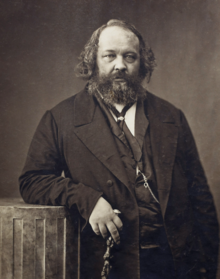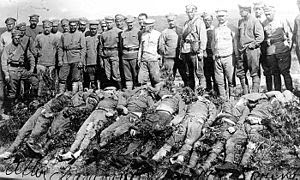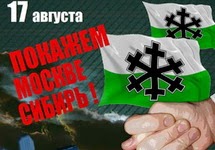While President Vladimir Putin seems committed to clawing back bits of territory on his western flank that used to be part of the former Soviet Union (Crimea, the Donbas, Abkhazia, etc.), a gigantic territory in the east is stirring to loosen, or even sever, its ties to Moscow. The response has been swift and harsh. But whether the Kremlin is nipping this movement in the bud or fanning its flames remains to be seen.
The region in question is Siberia, and even “gigantic” is an understatement. Not a political entity at all in its own right at present, Siberia simply refers to all of the parts of the Russian Federation that are in Asia, i.e. east of the Ural Mountains. This 13-million-square-kilometer territory makes up more than three-quarters of the Russian Federation as a whole and just shy of a whopping 10% of the land surface of the entire world—though its mostly frigid vastness contains only just over a quarter of Russia’s population. If independent, Siberia would take over from Russia its centuries-long status as largest country in the world—Canada would still be a trailing second—and knock what’s left of Russia down to number seven, between Australia and India. More to the point, Siberia contains most of Russia’s timber and mineral resources, plus the long Arctic Ocean coastline that could help Russia dominate the globe in the coming century as global warming frees unknowably vast energy resources from its ice cover (unless global warming kills us all first, of course (sorry to bring that up)).
 |
| This diagonal green-and-white flag is the most common Siberian regionalist flag in the modern period. |
 |
| Yet another proposed Siberian flag |
is designed to press for the establishment of a Republic of Siberia which would have considerably more autonomy than republics do now—especially when it comes to keeping in its own budget the wealth generated from Siberia’s natural resources. (Russia’s first post-Communist president, Boris Yeltsin, lured separatist republics like Tatarstan and Kalmykia into the new Russian Federation with promises of more autonomy, but his successor, Putin, has reversed course and created a heavily centralized empire, where the more potentially restive regions are run not by elected leaders but by cronies directly appointed by the Kremlin.)
 |
| Glorious overall-wearing Siberian proletariat smashes élitist oligarchs! |
The current movement, centered to all appearances quite closely on Novosibirsk, features artists as its central figures, including Artem Loskutov, who runs a blog on the topic. The fact that Loskutov’s public rallies have often seemed more like satirical, culture-jamming “happenings” than serious political endeavors does not seem to make the Kremlin view the prospect of an August 17th march any more kindly. But Loskutov makes clear that this is all hardly a prank, and that he is not alone. He told an interviewer recently, “I’m not an ideologist. Everything is very decentralized, as befits those advocating decentralization. I will take part in this protest as on ordinary person who cares about the future of Siberia and Russia as a whole.” Loskutov also seemed to carefully dodge questions about rumored plans to be appoint him “people’s mayor” of Novosibirsk, which would echo the terminology of the Donetsk People’s Republic and Lugansk People’s Republic rebels in eastern Ukraine, with whom the Siberian autonomy movement shares almost nothing ideologically.
 |
| Artem Loskutov |
 |
| A surfeit of flag proposals can be found in readers’ uploads to the Siberian movement’s banned Vkontakte page. |
 |
| Mikhail Bakunin: Siberia’s first separatist |
 |
| Victorious Bolsheviks posing with the corpses of Czech and Slovak pro-Siberian insurgents in 1917. |
 |
| Kaliningrad too? (And, yes, those are Prussian flags.) |
[For those who are wondering, yes, this blog is tied in with my forthcoming book, a sort of encyclopedic atlas to be published by Auslander and Fox under the title Let’s Split! A Complete Guide to Separatist Movements, Independence Struggles, Breakaway Republics, Rebel Provinces, Pseudostates, Puppet States, Tribal Fiefdoms, Micronations, and Do-It-Yourself Countries, from Chiapas to Chechnya and Tibet to Texas. The book, which contains dozens of maps and over 500 flags, is now in the layout phase and should be on shelves, and available on Amazon, by early fall 2014. I will be keeping readers posted of further publication news. Meanwhile, please “like” the book (even though you haven’t read it yet) on Facebook.]
Copious thanks are due to Jeff Groton for directing me to many of these sources.




